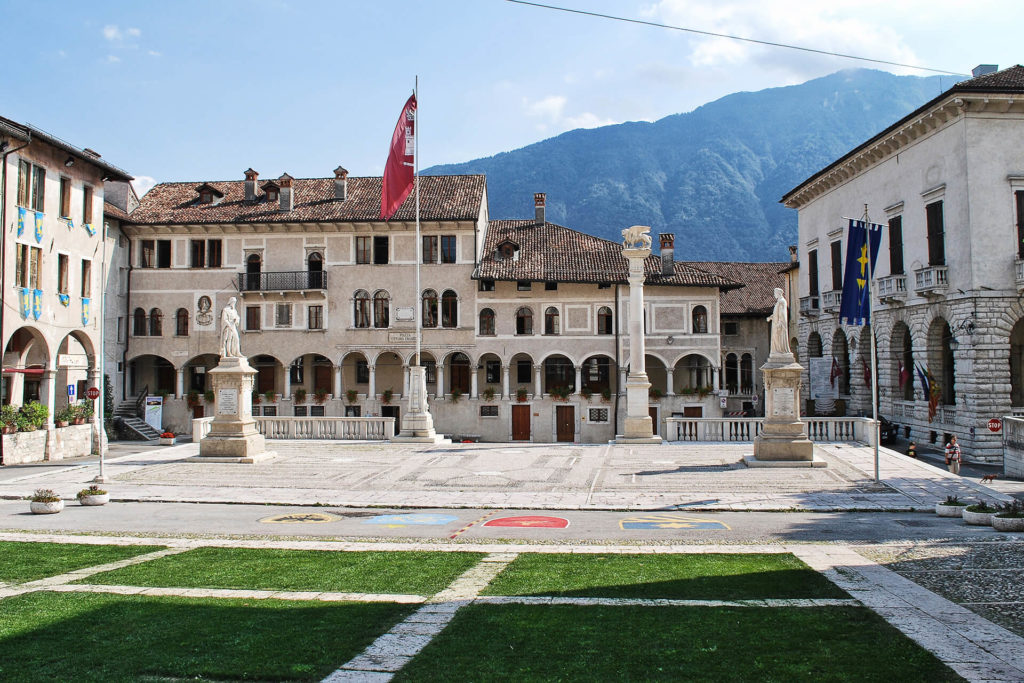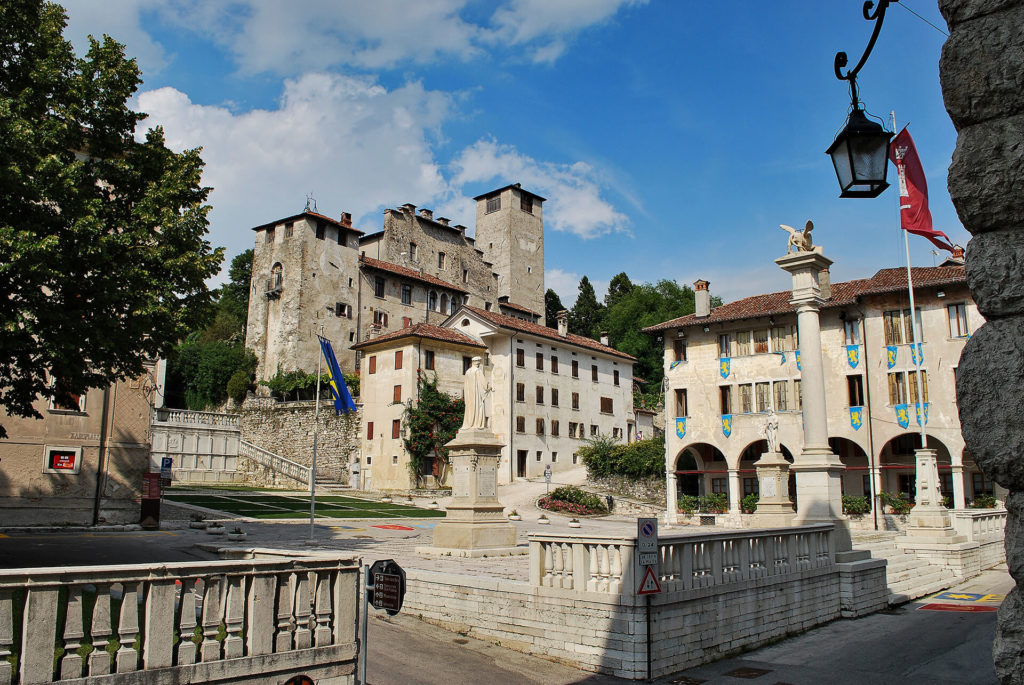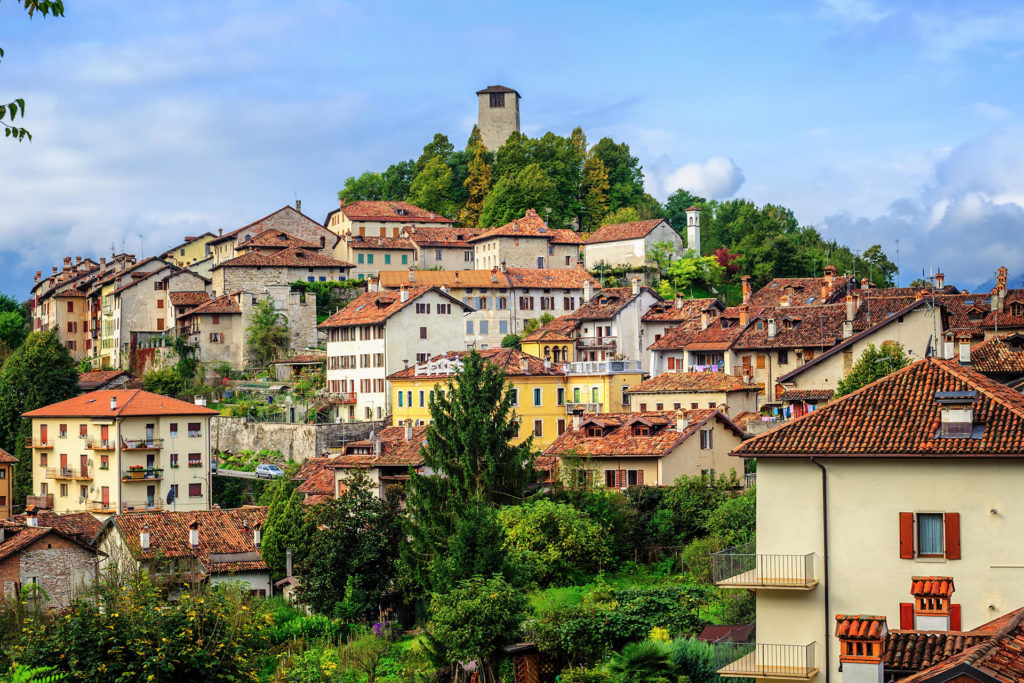Like many Italian towns, Feltre’s historic centre was protected by stone walls. Feltre is called the Vertical Village because the original city centre, the main square, a 16th-century castle and many elegant palaces were built on the highest part of the city. Feltre remains a perfect setting for the historic Palio, a traditional Italian horse race that is held every year between the end of July and the beginning of August. Each summer during the Palio festivities, the streets are coloured with the flags of the four teams and the city fills with athletes, flag-wavers and costumed figures.
Looking up from the historic main square, visitors can admire the local mountain peaks “Vette Feltrine“, which are the southernmost group of the Belluno Dolomites. Feltre is a very popular area for cycling enthusiasts as there are numerous bike trails and tours. The Belluno – Feltre area is crossed by the Munich-Venice and the Via Claudia Augusta Altinate, two long-distance walking, biking and driving routes that start from Germany and reach Venice while passing through the Dolomites.

Sena Theatre
The splendid Sena Theatre dates back to the 16th century and is housed inside the Palazzo della Ragione in Feltre’s main square. This historically important theatre hall was first built to host the meetings of the local government and later became used for public performances and events. The theatre has been renovated multiple times; its 1810 restoration was entrusted to Giannantonio Selva, the same architect who designed the Fenice Theatre in Venice. The Sena is known as the Little Fenice as the red velvet seats and curtains, pictorial decorations and side boxes resemble those used in the larger Venetian theatre. Many artists have crossed the stage of this theatre including Carlo Goldoni who debuted two comedies at the Sena in 1729 and 1730.
Pretorio Palace
This imposing building was once the residence of the chief magistrate and represented the seat of Venetian power in Feltre. Today, the Palace is home to the town’s offices but many areas are open to the public, including the Coat of Arms Hall and the former prisons. Narrow underground corridors wind past the former small prison cells that were in use until 1965. Today these cells house a collection of ancient books, manuscripts and the town’s archives. Evening tours of the former prison are available, and animated projections in the prison cells allow visitors to understand and view how these spaces were originally used.

Carlo Rizzarda Modern Art Gallery
The Carlo Rizzarda Modern Art Gallery is located inside the Bovio-Villabruna Cumano Palace, a 16th-century residence located in the historic centre of Feltre. Carlo Rizzarda, who was a wrought-iron artist, founded the gallery so his hometown of Feltre would have a museum dedicated to 20th-century decorative arts. The main collection of 196 works of art includes Rizzarda’s own pieces as well as other artists’ paintings, furniture, fine glassware and decorative art objects.
